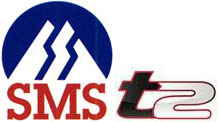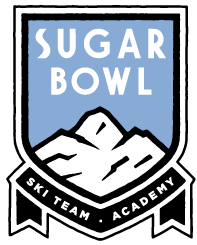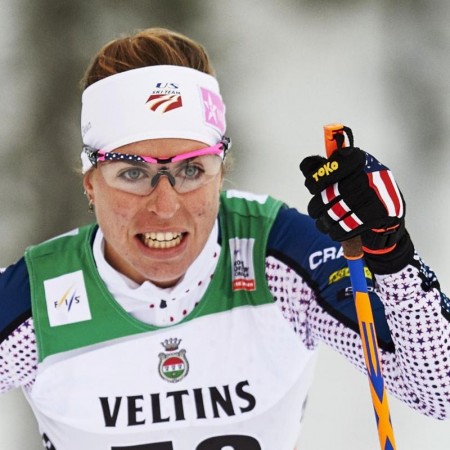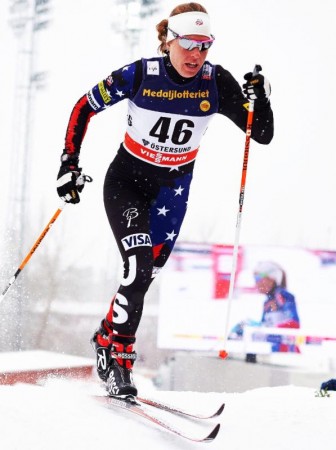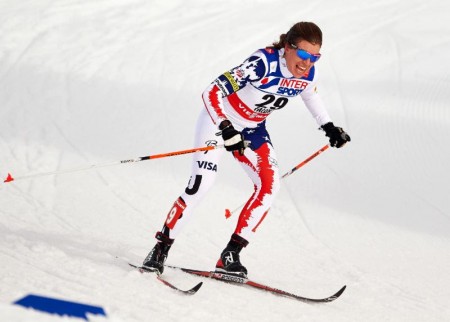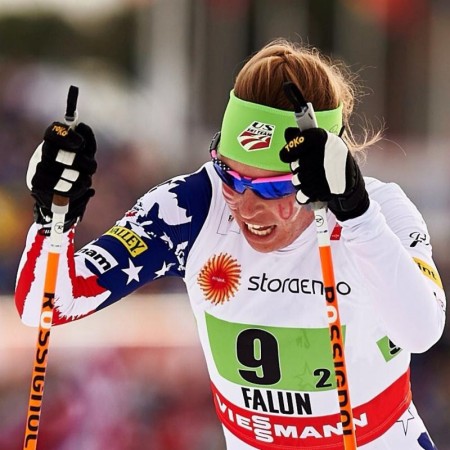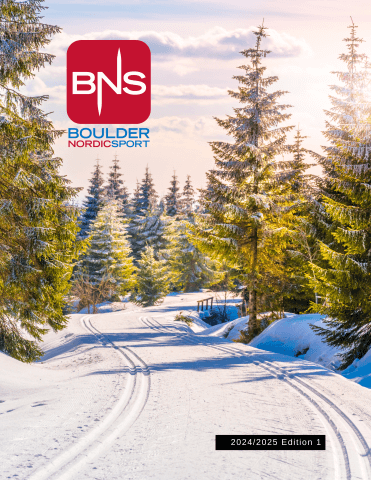Sun Valley SuperTour Field Reports – What the teams used in their own words:
CL Sprint:
For the CL sprint day I prepared a qualifier and round ski for each athlete. Temperatures were forecasted to get relatively cold and clear overnight and I figured we would at least be looking at some firm tracks in the morning and some sort of binder and hard wax for the qualifier before conditions soften and turned into unconsolidated sugar. One big challenge for an all classic weekend was to have a few different ski options to deal with changing conditions, especially as the western sun came out on saturday and forecasted snow moved in on sunday. Low base snowpack, coupled with lots of shoveling and a lack of moisture meant that the crystals didn’t have enough structure to form a solid track surface on the steeper climbs and we were going to see sugar out there at some point. Skiers needed a ski with enough camber to handle a warm dry wax, but with a soft enough finish to hold wax down on soft snowpack. For the qualifier I went ahead and applied LF blue, then HF blue. I didn’t go ahead and powder as I was planning on top coating skis during round and liked the speed of blocks over straight HF blue. In the morning I went ahead with JetStream Blue 2.0 block straight up as I liked the top end more than Helix spray in the tracks. I also went ahead and applied hard wax binder cut with a softer hard wax ironed in to the kick zone. Toko green hard wax binder excels in very abrasive conditions as it helps hold wax from stripping but when put on the night before can actually be too firm and inelastic to handle a soft dry wax in loose sugary conditions. For the qualifier I went ahead and used a warmer violet hard wax shelled with a blue hard wax for speed. I dialed in thickness and layering on athlete skis with the warmer wax bringing the kick up to a thickness they felt comfortable with, then shelled with a colder wax for a bit more speed and “freeness”.
Round skis I worked up with a warmer paraffin and jumped to Jetstream red block and spray for a topcoat. By the time of the afternoon rounds, the sun had gotten high enough for some solar effect and slight glazing in places. I stripped off the binder and abandoned shelling the kick wax as temperatures were too warm to freeze the kicking wax in a short time table. I also applied light linear hand structure to the tail of the ski to deal with any moisture or glazing in the track on the downhill finish and try to wring out a bit more top end speed from skis.
Overall I was relatively pleased with our skis although with limited testing resources and time during the rounds picking and dialing in race kick wax often involved some judgment calls especially on many new and unfamiliar race skis. Picking the appropriate ski for sugary conditions and dialing in thickness and and application definitely had the largest effect on kick security and speed, rather than picking the dry wax was working best around race time.
MST Distance:
For the distance race I figured we would be looking at conditions closer to the rounds of the CL sprint than the qualifier. I worked the same round skis up again with HF Red and burnt powder for some extra durability for the longer distance. I also went ahead and applied hard wax binder again cut with a soft dry wax for some durability and elasticity. With the warmer temperatures overnight I started athletes kick testing on a wax similar to their round ski from the day before. Although the snow had re-crystalized somewhat overnight, overall it was acting pretty warm and we quickly shot past the blue range into a stronger warm dry wax. Glide again was Jetstream red block with Helix spray. I left the same linear structure in the tails of the ski from the previous afternoon for the traffic of the mass start. As conditions broke down further for the guys race, I bumped them up into a stronger, stickier dry wax, trying very carefully not to over wax the pocket and slow the ski down considerably. A last minute snow squall minutes before the guys start had me rushing to cover with a colder wax and liquid floro the front and back of the zones to help minimize any risk of icing. Ultimately the snow held off and this probably want necessary and robbed some kick security but was worth the risk with the snow forecasted to start right as the gun went off for the guys race.
– Pat O’Brien, Head Coach SMST2 Team
Classic Sprint Super Tour December 5, 2015.
Conditions: Hard track with cold temperatures in the early morning ~7 degrees Fahrenheit warming to mid 20s during the middle of the day. Mid- low humidity and tracks set very nicely despite the warm temps the proceeding days before.
Waxes Used: HF Black paraffin base. Toko HF Red. Topcoat: Toko Red 2.0 JetStream Block for the qualifier. Toko HB 004 Block for the heats.
Classic Mass Start 10/15k December 6, 2015
Conditions: Loose granular track with temperatures in the low 20s overnight. As the day progressed it looked like it was going to snow, but it never amounted to any accumulation. Highs around Men’s race time were 29-30 degrees F. Humidity was approximately 55-60%. Track deteriorated after the Women’s Mass Start competition.
Waxes Used: HF Black paraffin base. Toko HF Red/Blue mix. Toko HB 004 Powder. Toko Red 2.0 JetStream Block.
Both days another brand’s kick wax were used
-Colin Rodgers, Head Coach Sun Valley Gold Elite Team
Saturday Classic Sprint:
Heading into the races last weekend at Sun Valley conditions were classic dry western snow. However, there were a few factors that pushed us away from a colder glide options and ultimately to the paraffin layer, Toko HF Red, which we used. Primarily, warmer temperatures on the day before the race combined with heavy skier traffic on a small loop caused the tracks to ski much warmer than the surrounding snow. For a top coats we liked the temperature range the 2.0 Jetstream Red gave us. We went with a powder layer, ironed in the night before. On race morning we quickly learned that liquids were running better than blocks, even in the cold temps and opted for a 2.0 Helix Red as our race finish.
Sunday Classic Distance:
For Sunday’s race we stayed with our paraffin base layer of Toko HF Red. This was in part due to wide range of Toko Red and a decent chance for a mid-race 30°F snow storm. The top coat was again Toko Jetstream 2.0 Red Powder. We went with a 2.0 Red Block layer for the freer feel and breaking speed over the tops of hills. Since the course was a short and hilly loop most teams opted for more kick. While some teams used a base layer of klister with a colder hard wax cover, we were able to find a hard wax combination strong enough to get us up the hills.
For kick on the weekend, we found that we were able to wax pretty warm while not sacrificing glide. We felt that having solid kick was important as the courses were all heavy striding. A kicker of Toko Yellow sandwiched in Toko Red was a good option, especially with the high humidity on Sunday
– Spencer Eusden, Sugarbowl Elite Team
Toko Glove All Star: Rosie Brennan
Hot off a third place in a World Cup Relay and just out of the points individually, we thought it would a good time for your all to get to know Rosie a bit better.
1. Who was your skiing role model when you were growing up and why?
Beckie Scott. She paved her own path and made it work with what she had, proving we too can accomplish great things.
2. What skier inspires you currently and why?
Marit Bjoergen. She can win any event and I have truly never heard a bad word about her. She promotes sportsmanship and teamwork in the finest of ways.
3. Favorite race course and why?
Donner Pass/Auburn Ski Club. I have always loved racing in Truckee, something about the scenery and the thin air…
4. Favorite workout and why?
L4 Bounding. Nothing humbles you quite like bounding, but also makes you feel like you are getting more fit by the second.
5. Favorite place to train and why?
Park City- sunshine, altitude, and miles of single track
6. Favorite movie line and why?
Anything from Mean Girls
7. Favorite Toko glove model (and/or color) and why?
Thermo Plus- stays on your hands and works for just about every condition
West Yellowstone Supertour Field Reports – what the teams used in their own words:
Skate Super Tour November 27-28, 2015.
Conditions: Hard packed corduroy with sub zero Fahrenheit temperatures. Lows both nights exceeded -15 degrees F with low humidity. Sprint loop became a little sugary on the surface with many skiers on course, but maintained its firm base. Distance loop stayed hard packed on Sunday throughout the entire day. Temperature during the races was warming through the teens.
Toko Wax Used: Both days- Paraffin Toko HF Blue with X-Cold Powder. Topcoat: Old Toko Moly Block.
Many topcoats were tested both days and the Old Toko Moly block won. We were lucky to have a block left in our box from years ago. I don’t believe it is made any longer.
Colin Rodgers, Head Coach Sun Valley Gold Elite Team
Can’t say it enough but that the new Helix 2.0 sprays rock! Easy to apply, always a safe option and really was impressed with the slipperiness of the blue spray in extreme cold and the top end speed on the red spray in those intermediate temperatures!
West Yellowstone Friday Sprint:
In order to save time on race morning I ran a fair amount of paraffin and powder tests a few two days in a row before sprint day. I did not like the way powder was making the skis run compared to blocks and sprays so I devoted more test time to different paraffin and topcoat build ups as durability really won’t a concern. I tried a few combos ranging from really trying to harden the base of the ski (repeated coats of cold wax) to keeping the paraffin more neutral with a shell hardener over the HF layer. I really liked the later option, especially in slightly warmer temperatures than the single digits we were seeing before sunrise so I simply set up athletes with a colder trending option for the morning and a slightly warmer heat ski option for once there was some solar effect during rounds.
Testing topcoats on race morning I sent most everyone in the group out on Jetstream 2.0 Blue block with Helix 2.0 Blue spray. The sprint course was surprisingly variable, especially in the afternoon because of strong warming from the sun. I felt that the Blue Helix did a great job freeing the ski, especially so when climbing back into the stadium over the blue block alone. Running a quick structure test in the AM, I left cold skis as is, and did not hand structure the heat skis unless they were on a cold ski again for the rounds. During the heat of the day, Matt Boobar and I actually switched to Helix 2.0 red over Jet blue block for a period as it was running better in the sun and traffic and gave better finishing speed for the lanes. By the junior rounds, we had switched back to blue spray as the sun was going down and the temps with it.
West Yellowstone Saturday Distance:
I pretty much ran the same under layers for the distance race the next day, setting up early guy starters with a pretty cold paraffin option on a “green” ski and a slightly warmer paraffin option with less hardening powder for a “blue” ski . For the warmer skis, and the girls who started mid day I also ended up burning powder for some added durability. As the snow had seen more skiing and grooming since testing a few days before, I felt it was getting to be more competitive and less of a liability. A quick test of some different powders race morning confirmed this even early in the morning after temps had dipped down towards -20+ for several hours.
Testing topcoats race morning, I again chose to go with blue Jetstream 2.0 block and helix spray in the morning for the slipperiness when climbing and at a working speed. I found some other topcoats that were running better on downhills at high speed, but felt that with the cold, slow snow it was most important to free up the ski during the work sections of the course. Guy starters got a light broken hand structure with ultra fine linear over the tails. Ladies got slightly more hand structure as sun and traffic started to to move sections of the course away from the really really cold aggressive snow we saw early in the morning. By the time of the ladies race I felt the snow had warmed enough in places that jet blue would have been a bit cold in the sun, and red a bit warm in the shade. As an intermediate step before going straight red, I should have mixed the two blocks and experimented with mixing the helix sprays but without adequate testing I wasn’t willing to risk using the race and athletes as the test! Something to play around with during fast warming trends that often occur with
Western sun before the Sun Valley races here!
Patrick O’Brien, Head Coach SMS T2 Team


